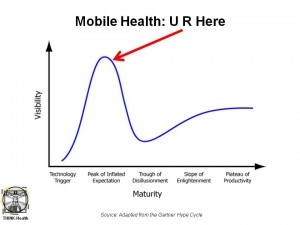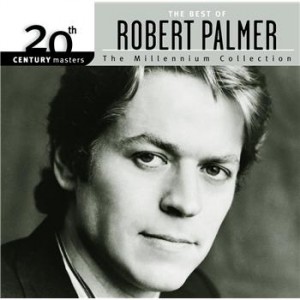 With mobile health (“mhealth,” for short) at the top of the Gartner Hype Cycle, and the annual HIMSS meeting gearing up for next week’s countless announcements about mHealth solutions for health providers and patients, how can someone get a true read on the intersection of mobile and health? What’s practical, what’s real, and where are ‘we’ in mobile health in February 2011?
With mobile health (“mhealth,” for short) at the top of the Gartner Hype Cycle, and the annual HIMSS meeting gearing up for next week’s countless announcements about mHealth solutions for health providers and patients, how can someone get a true read on the intersection of mobile and health? What’s practical, what’s real, and where are ‘we’ in mobile health in February 2011?
If you can’t be in the room with me on the morning of Thursday 17 February 2011 in the small group meeting at unNiched in New York City, let me share with you one lesson learned just last week at the Health | Tech | Food event celebrated during Social Media Week in Manhattan: when it comes to developing mobile health applications, mash it up!
At Health | Tech | Food, Luminary Labs organized what emerged as one of the most productive morning meetings I’ve ever attended. In a packed theatre at the Paley Center, app designers, computer engineers, patients and caregivers, writers, health industry folks from pharma and medical device companies, ad agency professionals, health content experts, and other kinds of people met to ideate in small groups around mobile health applications to address public health challenges for the citizens of New York City.
In a matter of an hour, small groups convened and co-created visions of apps to deal with the tough problems of smoking cessation, safe sex, finding healthy food at city bodegas in food deserts, keeping track of calories consumed on-the-go, and other issues that keep us from being as healthy as we can be.
The secret in the sauce of success for this meeting was the mixing up of different kinds of people with different skills, visions, experiences, ages, genders, sexual preferences, and mobile phone preferences. It was this mash-up of people that engendered productive output in the form of app ideas for health that are freely available on the Health | Tech | Food website as an Open Innovation Exercise licensed under a Creative Commons Attribution 3.0 Unported License.
 Health Populi’s Hot Points: As Robert Palmer wrote and sang, It Takes Every Kind of People. In this case, it takes every kind of people to design mobile health applications that are meaningful and speak to real people in real life.
Health Populi’s Hot Points: As Robert Palmer wrote and sang, It Takes Every Kind of People. In this case, it takes every kind of people to design mobile health applications that are meaningful and speak to real people in real life.
This is one of the signs of “hope” I’ll address in my talk at unNiched this week. unNiched is an event organized by the Path of the Blue Eye Project, the vision of Fard Johnmar, one of the first people I ever met who was working with health and communities online. As part of my talk on Mobile Health: Hype or Hope, I’ll talk about the importance of design, incentives and nudges, and being part of peoples’ lives at various touchpoints that bolster whole health (and not just addressing episodic or chronic illness).




 I'm in amazing company here with other #digitalhealth innovators, thinkers and doers. Thank you to Cristian Cortez Fernandez and Zallud for this recognition; I'm grateful.
I'm in amazing company here with other #digitalhealth innovators, thinkers and doers. Thank you to Cristian Cortez Fernandez and Zallud for this recognition; I'm grateful. Jane was named as a member of the AHIP 2024 Advisory Board, joining some valued colleagues to prepare for the challenges and opportunities facing health plans, systems, and other industry stakeholders.
Jane was named as a member of the AHIP 2024 Advisory Board, joining some valued colleagues to prepare for the challenges and opportunities facing health plans, systems, and other industry stakeholders.  Join Jane at AHIP's annual meeting in Las Vegas: I'll be speaking, moderating a panel, and providing thought leadership on health consumers and bolstering equity, empowerment, and self-care.
Join Jane at AHIP's annual meeting in Las Vegas: I'll be speaking, moderating a panel, and providing thought leadership on health consumers and bolstering equity, empowerment, and self-care.